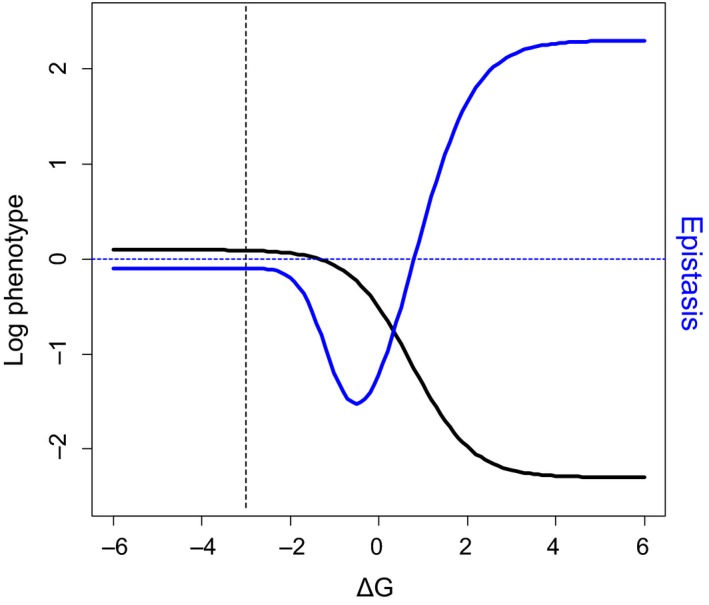Figure 7.

Trends of epistasis predicted by thermodynamic model of mutation effects. Black sigmoid curve shows the logarithm of a phenotype that increases proportionally with the fraction of natively folded protein molecules as a function of the free energy of folding, ΔG. A small background value (phenotype of 0.1 in the absence of any correctly folded molecules) has been applied to capture the situation for nonessential genes and/or the effect of measurement background/limits. If the phenotype truly approaches 0 in the limit of very high ΔG, the stability curve is no longer sigmoidal on this log scale, but has a concave shape, causing epistasis (see below) to become increasingly negative, in a linear fashion, as ΔG increases. In reality, however, biology or experimental limitations often result either in a background phenotype value in the absence of correctly folded protein, resulting in a log‐sigmoid as shown here, or in a threshold being applied below which all mutants are considered null and therefore not considered for epistasis analysis. The formula and parameter values are as for Figure 3, with the addition of the 0.1 phenotype background. Dashed vertical line marks a hypothetical wild‐type protein stability (−3 kcal/mole), located on the stability plateau. Blue curve shows the epistasis that would occur between pairs of mutations of identical ΔG effects, each of which individually displaces ΔG from the wild‐type value to the value indicated by the x‐axis. Dashed horizontal line marks the boundary between positive and negative epistasis (i.e. zero epistasis). A transition from negative to positive epistasis occurs as mutations become more strongly destabilizing, due to the sigmoidality of the stability curve. The shape of the epistasis curve could explain why both negative and positive epistasis are observed between mutations within proteins, as well as the existence of certain correlations between mutation effect size and epistasis (see below)
